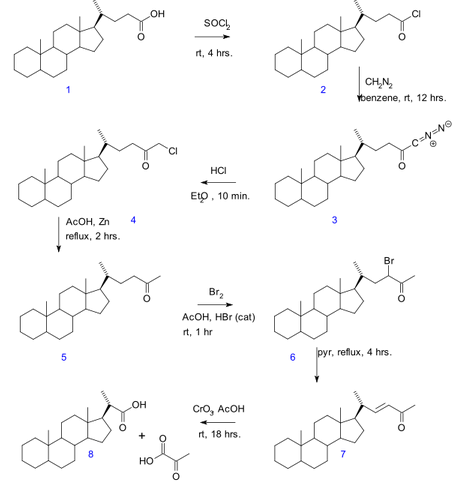In Gallagher-Hollander Degradation (1946) pyruvic acid is detached from a linear aliphatic carboxylic acid giving a new acid with 2 carbon atoms less. The original reaction concerns the conversion of bile acid in a sequence of reactions: acid chloride (2) formation by thionyl chloride, diazoketone formation (3) by diazomethane, chloromethyl ketone formation (4) by hydrochloric acid, organic reduction of chlorine into methylketone (5), ketone halogenation into 6, elimination reaction with pyridine to enone 7 and ultimately oxidation with chromium trioxide to bisnorcholanic acid 8.

Email based Gallagher–Hollander degradation assignment help - Gallagher–Hollander degradation homework help at Expertsmind
Are you finding answers for Gallagher–Hollander degradation based questions? Ask Gallagher–Hollander degradation questions and get answers from qualified and experienced chemistry tutors anytime from anywhere 24x7. We at www.expertsmind.com offer Gallagher–Hollander degradation assignment help - Gallagher–Hollander degradation homework help and Chemical Reactions problem's solution with step by step procedure.
Why Expertsmind for Chemistry assignment help service
- Higher degree holder and experienced tutors
- Punctuality and responsibility of work
- Quality solution with 100% plagiarism free answers
- On Time Delivery
- Privacy of information and details
- Excellence in solving chemistry queries in excels and word format.
- Best tutoring assistance 24x7 hours